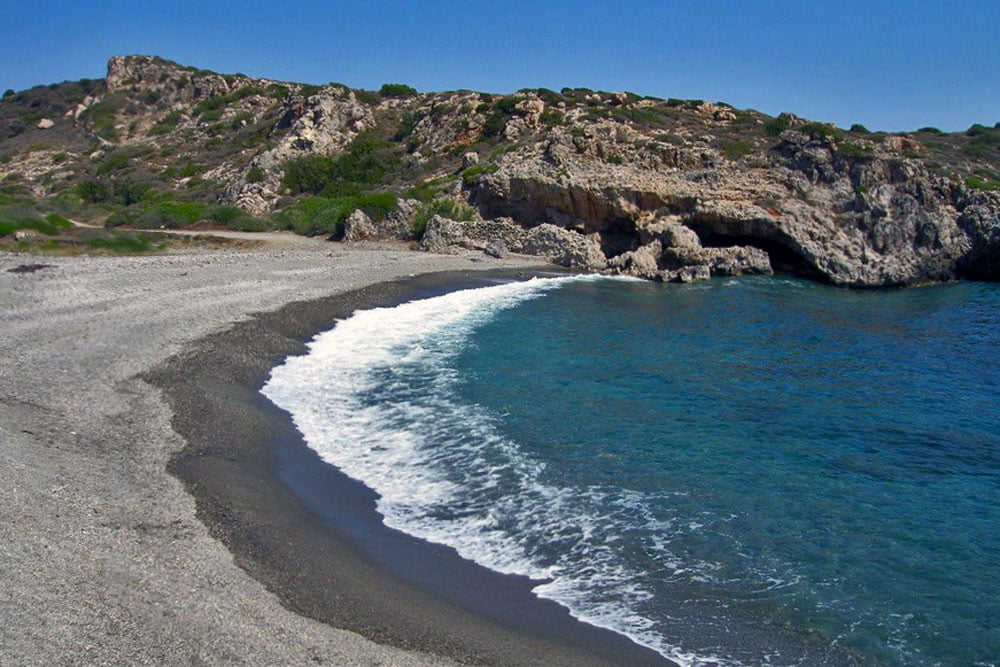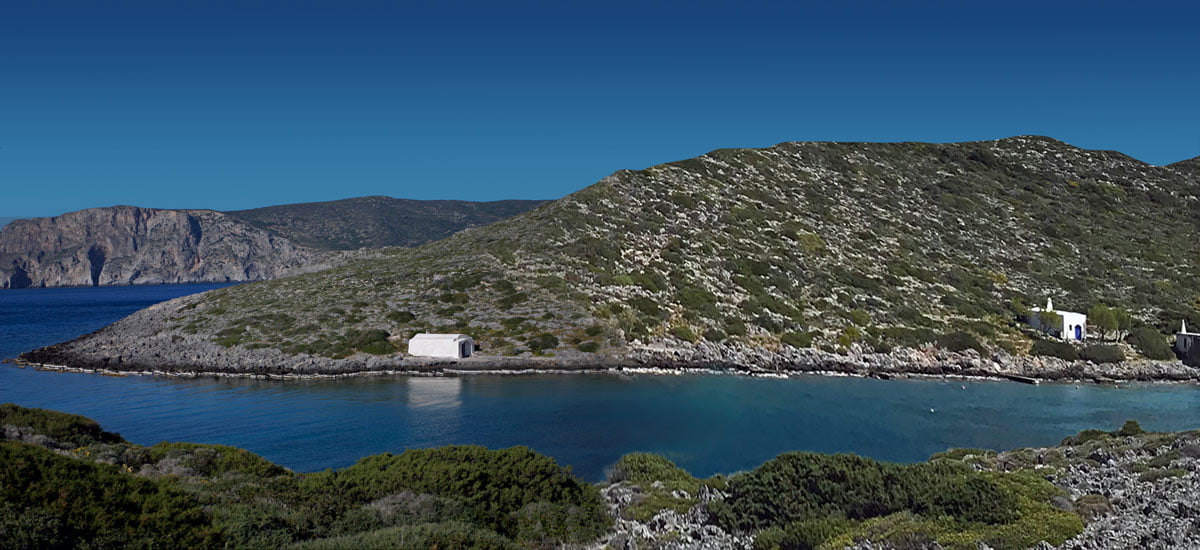A journey to the heart of wild, fragile beauty
When spring awakens the Greek land, something deeper awakens in Kythira. The island seems to breathe differently. It is not just the wildflowers that pop out of rock crevices, nor the chirping of birds that make their nests in the shadows of low trees. It is an invisible shift in time. Here, spring is not a season – it is a mood, a mystique, a revelation. Kythira in spring does not scream. It whispers. And whoever follows them on their paths, those old ones, the hiking ones, the ones built with sweat and stone, does not just walk. He reads an epic written with soil and water.
Starting from Mylopotamos, one of the most mythical villages in Kythira, the traveler sees time stop. Here, the old watermills sleep next to the waterfalls, which fall incessantly, like eternal sadness or redemption. The route to “Neraida”, the most famous waterfall of Kythira, is a path of dew, whispers of leaves and the sound of water accompanying every step. The light plays through the leaves, while the smell of damp soil mingles with the aromas of lavender and thyme.
Further up, at the ruins of Paliokastro, where the ancients once guarded the fate of the island, spring arrives slowly and imposingly. The landscape opens up and the gaze is lost in the blue of the sea. The silence here has depth. Steep and imposing, the hill leads you to rethink the concept of memory – as if you were touching a stone and feeling stories beneath it. Nearby, the small chapel of Panagia Apolytrotria, nestled into the slope, seems to have been born with the rock. You can sit there, alone, and listen to the pulsating heart of the island. A place where the light does not fall, but caresses.
Further south, as you approach Chora and follow the downhill cobblestone path towards Kapsali, every turn of the road opens up new horizons. The whitewashed houses of the capital reflect the spring light, while geraniums and bougainvillea fill the balconies with color. The route ends where the mountain meets the sea – in Kapsali, with the boats gently rocking and the castle rising in the distance like a shadow from a fairy tale.
But it’s not just the natural areas of Kythira. It’s also the encounters. A grandfather in the cafe who will treat you to rakomelo and tell you about the fairy he saw, as a child, in the river of his village. A grandmother who will ask you where you are from and give you some fresh cheese for the road. And always, that feeling that the island remembers you – even if you have never set foot on it again.
Hiking in Kythira in spring is not a sport. It is an act of return. To nature, to simplicity, to yourself. And the island does not pressure you – it offers itself to you. It shows you the way, it leaves you signs: an old church with faded hagiographies, a stone bridge covered in lichen, a spring that still runs.
To Kythira in spring, you don’t go to “see”. You go to listen. To taste. To remember something you didn’t know you had forgotten.

As you walk deeper into the heart of the island, Kythira begins to speak to you in a language that is not words. It is the sounds – of the wind passing through the cypress trees and the bell from a distant herd. It is the smells – wild rosemary that stops you from closing your eyes, and then sage, and suddenly jasmine from a courtyard you can’t see. It is the silence – that dense, full-of-presence silence that surrounds the old churches and forgotten chapels that kiss local legends, among stones and shadows.
One of these paths leads to Avlemonas, the picturesque seaside fishing village that looks like a painting. There, spring blooms more lazily. The reeds rustle next to the sweet little harbor and the water shimmers like liquid light. Someone tells you about Fortezza, the ruins of the old Venetian fortification that once controlled the pass. Every stone there bears witness to battles, rains, centuries. Here, hiking doesn’t just take you to destinations. It takes you to stories. And every turn of the path is another page.
At noon, if you stand in a mountain village, like Potamos, you might be drawn by the smell ofthe kid in the pot or freshly baked pies. Here, hospitality is not professional – it is spontaneous. If you say “good morning” to someone, it is very likely that they will say “come for coffee”. And behind their yard, there is always a small, hidden path, a cobblestone path that leads to a chapel, to some breathtaking view.
And just when you feel like you have seen and experienced enough, the evening light comes and finds you on the rock above Kapsali. There, where the sun touches the sea and the Castle of Chora becomes a shadow in the orange sky. It is that time when you don’t want to talk. Just stand. Look. Let the island tell you what you didn’t have time to ask.
Kythira in spring doesn’t just offer beautiful images. It offers depth. They invite you to a slow, almost pulsating rhythm, and teach you that walking can become a way of life. That the landscape is not decorative, but alive, a conversationalist. Every stone, every trunk, every shadow, is part of an old narrative waiting to be told again, through your own steps.
Perhaps this is what makes Kythera so special: you don’t “visit” it. You cross it. You listen to it. And when you leave, you feel like you carry something a little older, a little wiser, a little lighter inside you.




